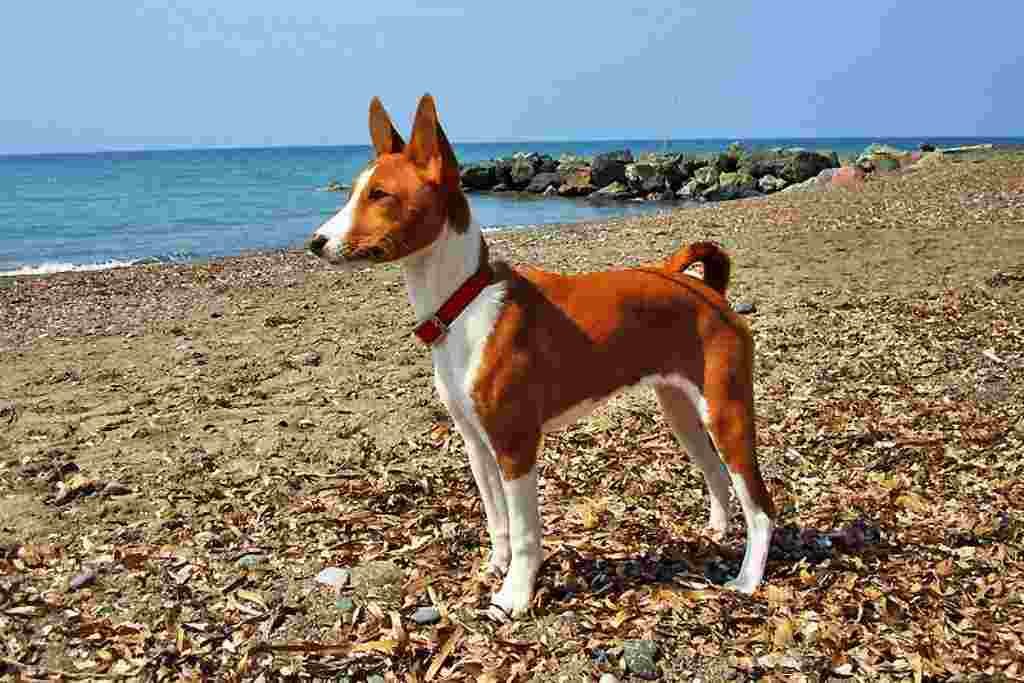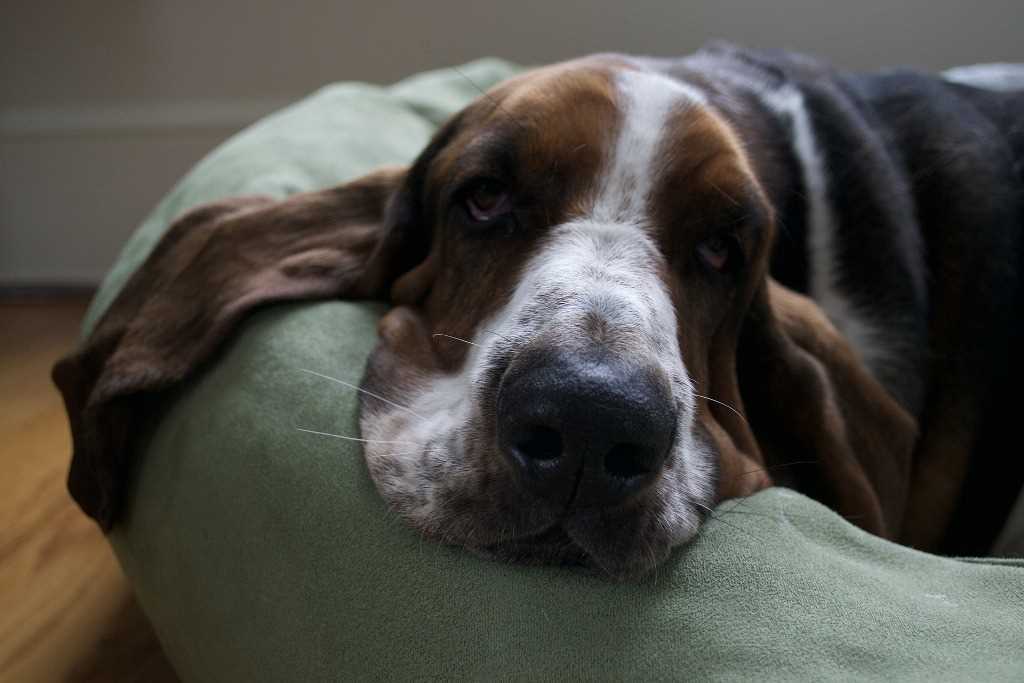The history of the Basenji dog breed is very old, it is even mentioned in ancient Egypt, thousands of years before the birth of Christ, when these specimens were brought as gifts to the Pharaohs and traces of them can be found, so much so that in many tombs of the Fourth Dynasty, dating back to 3600 BC, we find them depicted crouched near their master’s chair.
This breed then disappeared for millennia, so much so that it was thought to be completely extinct, but the British colonised Africa and found specimens in the regions between the Congo and southern Sudan in the mid-19th century. It was used by local tribes to hunt small prey, as a guide in the forest and as a beacon for fierce animals. The tribes exploited its excellent eyesight, speed and quietness for hunting.
In fact, one of the characteristics of this breed is that it does not bark. It does not bark but it is not mute, if it must, when it is excited or happy or when it has to express its dissent for something, it emits a sound that resembles a howl mixed with a growl, in different gradations to express the different states of mind. According to some studies, this vocal peculiarity is due to the conformation of the larynx, which is different from that of other dogs.
In its areas of origin it is a well-known dog, in Europe and the rest of the world it is almost completely unknown. In fact, it only arrived in Europe in 1937, brought by the English breeder Veronica Tudor Williams. Today, the breed is among the purest in existence, having always lived in very isolated regions.
In the local Lingala language, its name, basenji, means “dog of the savages” or “dogs of the villagers”.
Character of the basenji dog breed
The Bessenji dog breed is an unusual breed; although it is a domestic animal, it is not a great cuddler and is animated by a great curiosity and a lively, exploratory spirit, which also leads it to play differently from other dogs. It has a possessive temperament and is very attached to its owner, by whom it does not tolerate being ignored. This dog would defend his owner even at the cost of his own life.
He enjoys company and can therefore live well at home with children, although he is not particularly fond of playing with them. It does not tolerate loneliness and could become destructive if left alone for too long.
It is defined as the most cat-like of all dogs, because it cleans itself as felines do; it loves cleanliness and detests bad smells, furthermore it likes to perch on a chair or in any case high up to keep everything under control. Like most felines, it hates water and humidity.
It is not suitable for those who do not have experience with dogs; it needs a very firm education because it has a very stubborn, very determined personality and can get the upper hand over an overly permissive owner. Subordination and submission are not for him. It is difficult to catch, it is strong psychologically and physically. It needs constant stimulation and reacts badly to boredom. In fact, he needs adequate physical and mental effort.
It loves running and being outdoors, and even if it can live in a flat, it needs a lot of time outside to discharge all its energy. It is therefore not suitable for elderly or sedentary people; its ideal owner is a sportsman who does a lot of exercise.
It is not aggressive towards strangers, but it is best to get it used to being indifferent from an early age. It is also not very sociable with other dogs, unless it was brought up at an early age.
Appearance of the Basenji dog breed
It is a small to medium sized dog, the height at withers of a male ranges from 41 to 43 centimetres for a weight of about 10 to 12 kilograms, the female usually a little smaller. Its appearance is proud and its gait elegant. It is a breed of light constitution, with a fine bone structure, it is high on the limbs considering its length. The body is well proportioned, with a short straight back, the limbs are long, muscular and fine-boned, the tail is attached high and spirals over the spine resting on the back.
The head has a flat skull, well chiselled and of medium length, thinner towards the truffle, the eyes are almond shaped and are set obliquely, the colour is usually dark. The ears are small, pointed and carried erect. On the forehead we can distinguish very marked wrinkles.
The hair of the coat is short and silky, very fine, the colours are reddish, blond or black with extended white spots. Since the year 2000 they can also be found with a tiger coat, which is rough to the touch.
Care and health of the Basenji dog breed
The Basenji dog breed is a healthy breed, but can suffer from some breed-specific diseases, for which genetic tests are available to exclude affected individuals. It has a life expectancy of 10 -12 years.
It requires no special care and attention; it washes itself and cleans its coat independently, just like cats. It is a very clean dog and not only does not dirty in the house, it cleans itself and is free of any bad smell.
While it tolerates heat well, it is not used to low temperatures, so it is necessary to avoid letting it get cold.
It does not tend to put on weight as long as it gets adequate exercise and eats everything, usually in smaller quantities than another dog of the same size.


